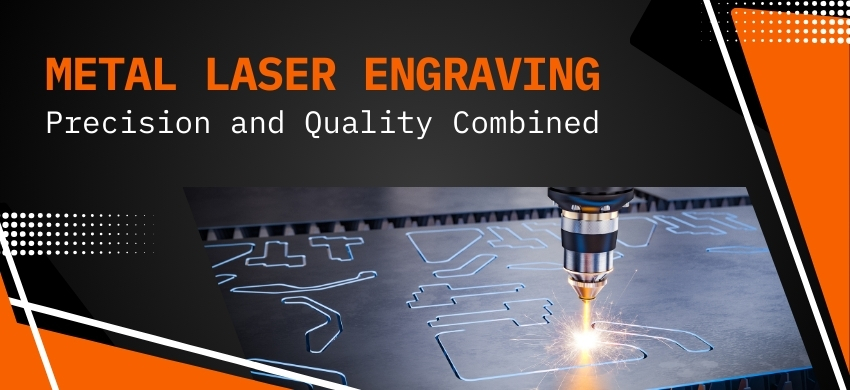UK-based suppliers, applicators and trainers. Call us today to get a free sample : 01604 644604


Metal laser engraving is a flexible and cutting-edge method that has completely changed how producers and designers handle branding and product finishing. High precision, robustness, and a broad range of applications across multiple sectors are provided by this method.
Using powerful laser beams from engraving machines, material is removed from a solid metal surface in the process of metal laser engraving. Usually, the method works on the basis of sublimation, in which a substance changes instantly from a solid to a gaseous form without going through a phase of liquidity.
Different types of lasers, each with specialized wavelengths and purposes, are used by laser engraving machines:
Fiber lasers: These lasers produce excellent engraving results because their wavelength, which is roughly 1064 nm, is well absorbed by plastic and metal surfaces.
CO2 Lasers: much metals reflect much of the red and infrared wavelengths that CO2 lasers emit, which makes engraving with CO2 lasers challenging.
Diode Lasers: If the engraving requirements are straightforward and low power, diode lasers might be utilized to engrave metal. 1064 nm is the optimal wavelength for etching metals.
Infrared Laser: Because they use an infrared wavelength, these engravers can be used on a variety of materials, including metals and polymers.
Ultraviolet laser: Shorter wavelengths in the violet and ultraviolet range—which are highly reflecting red and infrared wavelengths emitted by CO2 lasers—are produced by ultraviolet laser engravers.
Take into account the ensuing advice and elements to get the greatest outcomes:
Clean Surface.
Make sure the metal surface is clean before beginning any laser engraving. To clean the metal, use denatured alcohol and a clean towel.
Use a moderate amount of laser engraving spray.
To keep the metal from showing through, use a moderate amount of engraving spray. If you use too much spray, you might have to engrave more than once.
Test the metal.
Prior to engraving, test the metal to ascertain the ideal laser power and
speed settings.
Employ a rotary attachment.
To provide the laser beam with a locally "flat" area on curved surfaces, utilize a rotary attachment.
Set up the system.
Set up the laser system correctly for the chosen metal by consulting the operation manual provided by the laser manufacturer for suggested settings and basic setup guidelines.
Take the appropriate safety measures.
Be sure to take all necessary safety measures before beginning any engraving work.
Material Absorption.
Metals can absorb shorter wavelengths more readily, which raises the efficiency of engraving.
Reflectivity.
Metals reflect longer wavelengths more readily, which makes engraving more challenging.
Power.
Metals with greater vaporization temperatures demand higher power lasers.
Safety.
Shorter wavelength lasers may provide a greater risk to skin and eyes.
Cost.
Not all laser varieties are available in all wavelengths, and certain wavelengths are priced higher than others.
Beam Quality and Focusability.
Sharper, finer laser beams can be produced by using certain wavelengths that provide better focusing.
Metal laser engraving has a number of benefits, such as:
High precision.
Text, logos, and images can be marked precisely and accurately on metal surfaces using laser engraving.
Durability.
Engraved marks are perfect for long-lasting applications because they are permanent and resilient to abrasion.
Versatility.
Laser engraving is appropriate for a range of industries and applications because it can be used to a large number of metals and materials.
Cost-effectiveness.
Small enterprises and enthusiasts can afford laser engraving machines because they come in a range of sizes and prices.
Achieving the best cutting and engraving results requires an understanding of how the material and laser wavelength interact. The three most popular types of lasers used for metal engraving are diode, fiber, and infrared lasers. Each has advantages and disadvantages of its own. You may produce excellent engraving results on a variety of metals by using the right type and wavelength of laser.